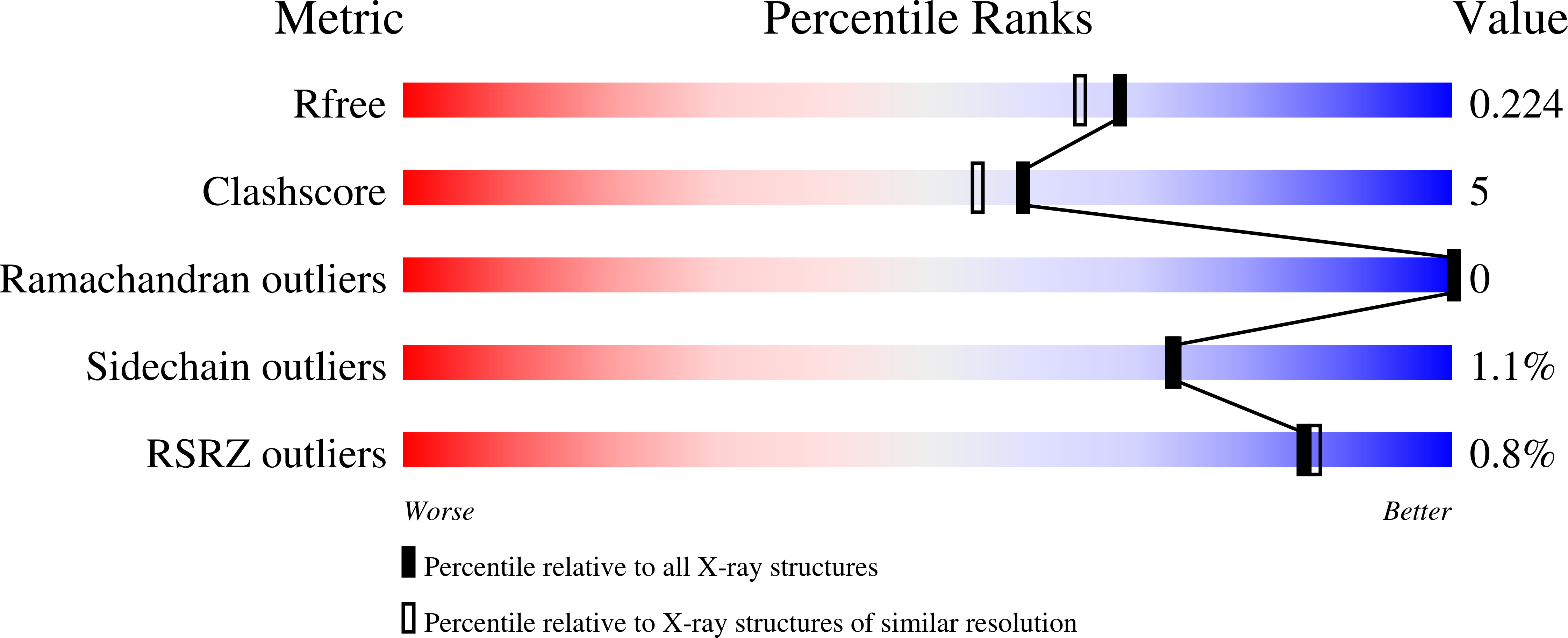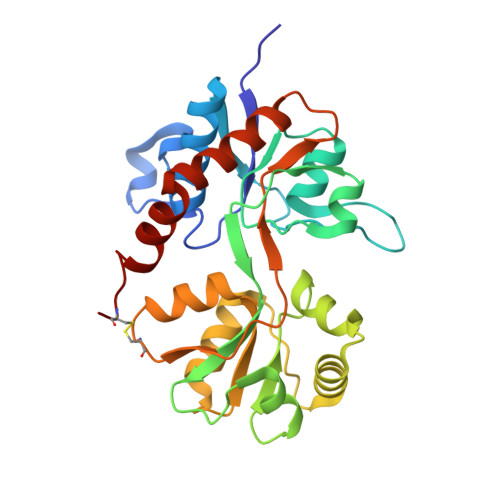A new phenylalanine derivative acts as an antagonist at the AMPA receptor GluA2 and introduces partial domain closure: synthesis, resolution, pharmacology, and crystal structure
Szymanska, E., Frydenvang, K., Contreras-Sanz, A., Pickering, D.S., Frola, E., Serafimoska, Z., Nielsen, B., Kastrup, J.S., Johansen, T.N.(2011) J Med Chem 54: 7289-7298
- PubMed: 21923187
- DOI: https://doi.org/10.1021/jm200862h
- Primary Citation of Related Structures:
3TZA - PubMed Abstract:
In order to map out molecular determinants for competitive blockade of AMPA receptor subtypes, a series of 2-carboxyethylphenylalanine derivatives has been synthesized and pharmacologically characterized in vitro. One compound in this series, (RS)-3h, showed micromolar affinity for GluA1(o) and GluA2(R)(o) receptors with an approximately 4-fold preference for GluA1/2 vs GluA3/4. In TEVC electrophysiological experiments (RS)-3h competitively antagonized GluA2(Q)(i) receptors. The X-ray structure of the active enantiomer (S)-3h in complex with GluA2-S1S2J showed a domain closure around 8°. Even though the nitro and the carboxyethyl groups of (S)-3h were both anchored to Tyr702 through a water H-bond network, these interactions only induced weak subtype selectivity. In spite of the fact that (S)-3h induced a domain closure close to that observed for partial agonists, it did not produce agonist responses at GluA2 receptors under nondesensitizing conditions. 2-Carboxyethylphenylalanine derivatives provide a new synthetic scaffold for the introduction of substituents that could lead to AMPA receptor subtype-selective ligands.
Organizational Affiliation:
Department of Medicinal Chemistry, Faculty of Pharmaceutical Sciences, University of Copenhagen, 2 Universitetsparken, DK-2100 Copenhagen, Denmark.
















